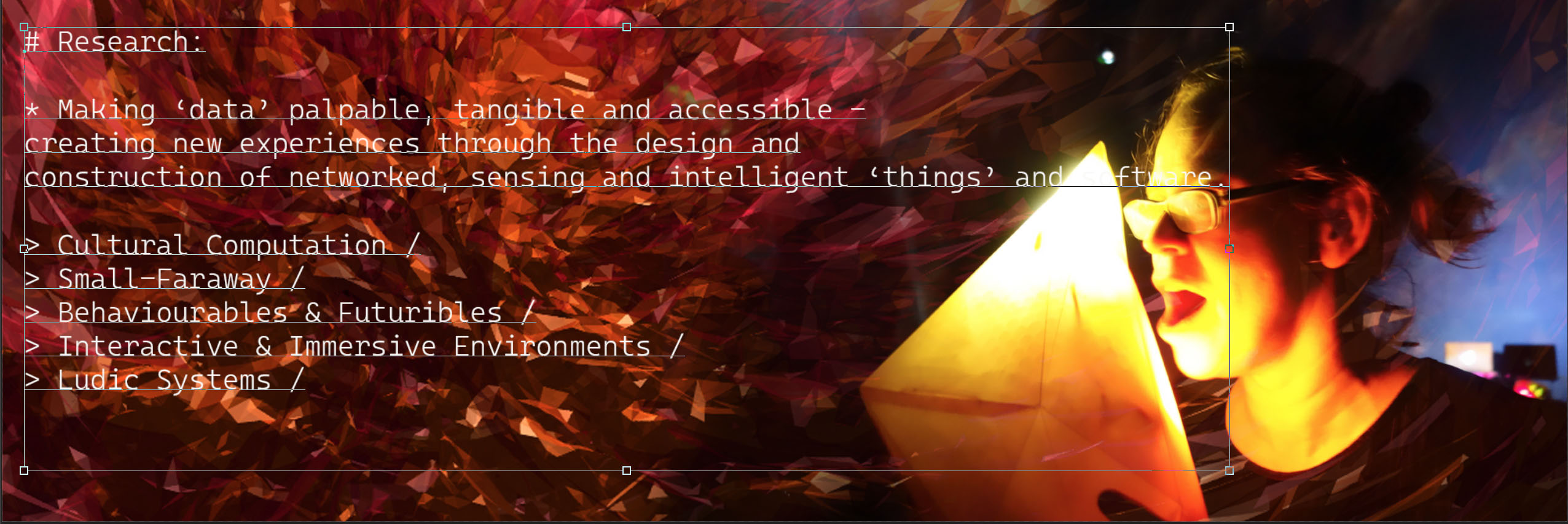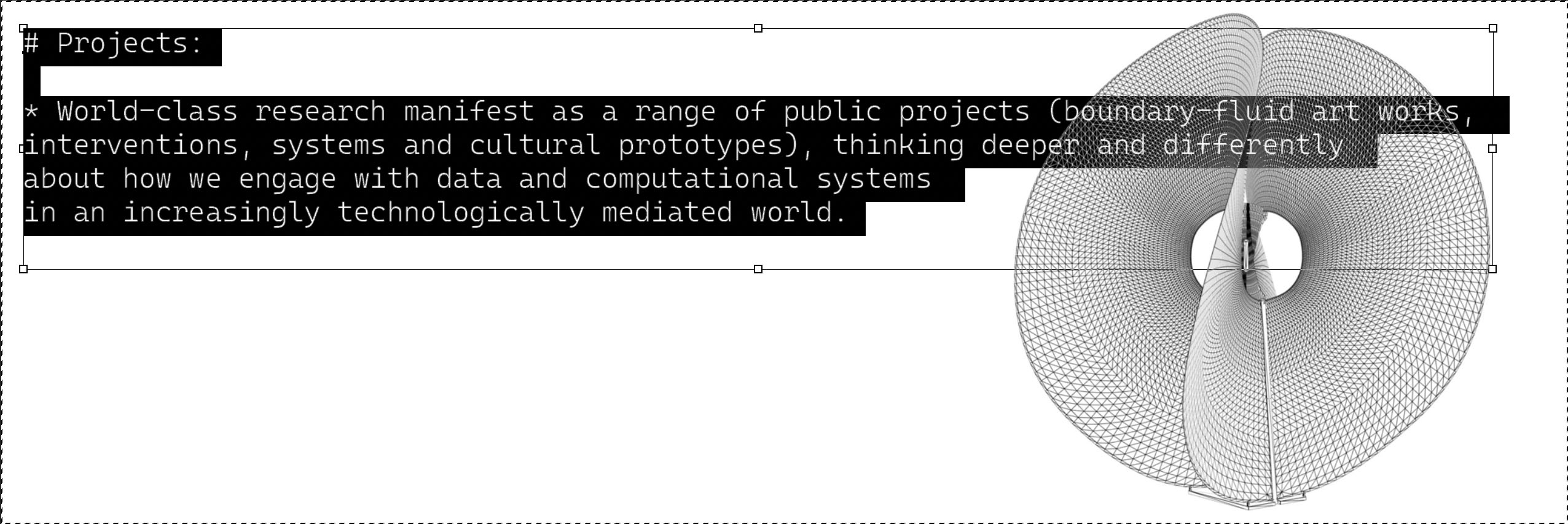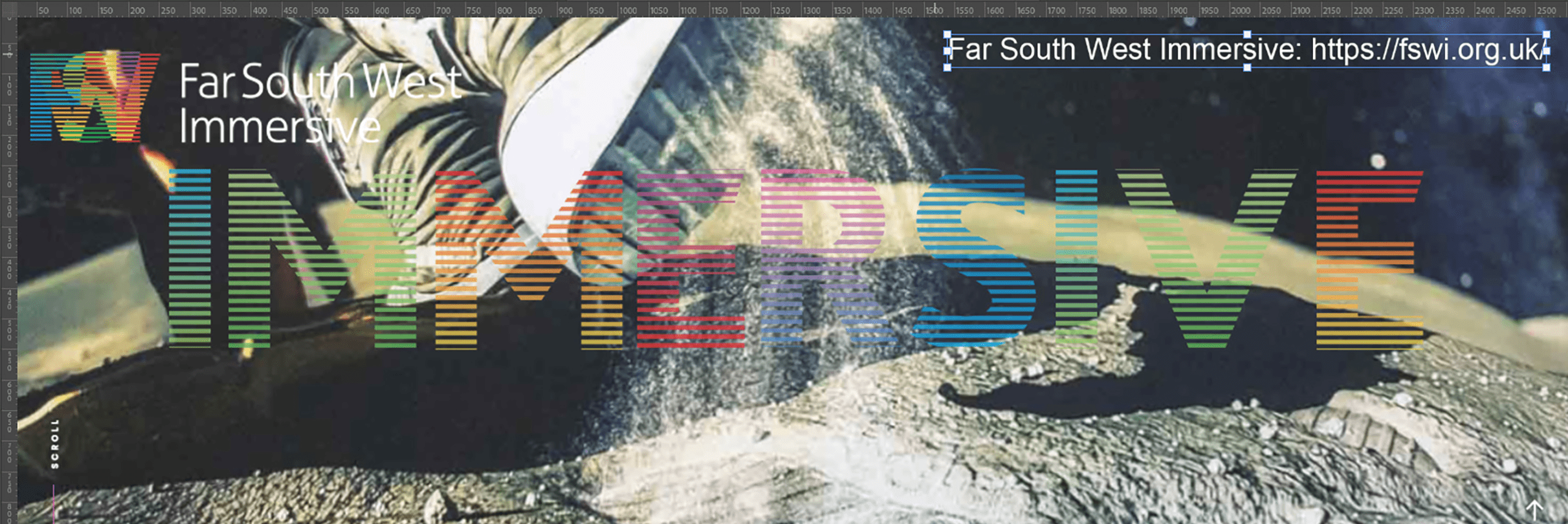
i-DAT has contributed to LA PLISSURE DU TEXTE 2 (LPDT2) (Incheon International Digital Art Festival 2010 (INDAF), 01-30/09/2010, Tomorrow City, Songdo, Incheon, Korea) a Twenty First Century reimagination of Roy Ascott’s famous telematic work LA PLISSURE DU TEXTE from 1983. This Second Live version (built and enacted by Elif Ayiter , Max Moswitzer and Selavy Oh, in association with Heidi Dahlsveen) is installed at INDAF incorporates an Artificial Intelligence which enables the public to enter into an SMS conversation with the LPDT2 metaverse.
http://www.indaf.org/e_sub02_02.asp

LPDT2
THE SECOND LIFE OF LA PLISSURE DU TEXTE
Roy Ascott 2010
LPDT2 is the sequel to Roy Ascott’s initial La Plissure du Texte, the generic telematic project about distributed authorship, and the pleasure and pleating of the text, created for the exhibition Electra at the Musée d’Art Moderne, Paris in 1983
<http://artelectronicmedia.com/artwork/la-plissure-du-texte>.
Now, three decades later, LPDT2 seeks a new level of artistic creativity and technological expertise, dealing with distributed authorship in the metaverse of Second Life, involving textual mobility and the fluidity of an emergent poesis. Just as, in the first LPDT, when artists explored the telematic technology of the early 1980s, LPDT2 involves leading artists and designers in Second Life, and their associates, in the conception and construction of worlds of non-linear text, transforming the metaverse into a purely textual domain. The field of operations is a horizontal screen: the table-top motif that runs throughout Ascott’s oeuvre.
Principal Co-Authors
Elif Ayiter aka Alpha Auer is a designer and researcher specializing in the development of hybrid educational methodologies between art & design and computer science, teaching full time at Sabanci University, Istanbul, Turkey. She has presented creative as well as research output at conferences including Siggraph, Consciousness Reframed, Creativity and Cognition, ISEA, ICALT, Computational Aesthetics (Eurographics) and Cyberworlds. She is also the chief editor of the forthcoming journal Metaverse Creativity with Intellect Journals, UK and is currently studying for a doctoral degree at the Planetary Collegium, CAiiA hub, at the University of Plymouth with Roy Ascott. http://syncretia.wordpress.com/ http://alphatribe.tumblr.com/ http://www.citrinitas.com/
Max Moswitzer, born1968, lives and works in Vienna and Zurich. Moswitzer’s output is in Fine Art and the construction of playful situations, using dérive and détournement as methodology for transformation and reverse engineering of networked computer games and art systems. Since 1996 provides his own server <http://www.konsum.net> and is founding member of www.ludic-society.net <http://www.ludic-society.net> . In 2007 Moswitzer moved some of his creative practice into the metaverse, i.e., Second Life. His architectural installation „Whitenoise“ was one of four winners for the first Annual Architecture & Design Competition in Second Life, an internationally juried event of Ars Electronica 2007. He recently completed „Ouvroir“, a virtual museum in Second Life for Chris Marker commissioned by the Museum für Gestaltung, Zürich.
Selavy Oh was created in 2007 as an avatar in Second Life, where she works using the virtual world as medium. She presented her work in solo exhibitions within Second Life, e.g. at IBM exhibition space, Arthole Gallery, and Odyssey. Her work was selected for the Final 5 exhibition of the mixed-media project “Brooklyn Is Watching” at the Brooklyn art gallery Jack The Pelican Presents. Her work has been covered by prestigious web publications such as SmartHistory and art:21. Selavy’s creator works as neuroscientist at the University of Munich investigating topics from spatial perception over computational neuroscience to human-robot interaction.
Associates
i-DAT is a networked entity catalyzing Art, Science and Technology research [www.i-dat.org]. Chris Saunders is a Research Assistant at i-DAT and a digital media developer for organisations as diverse as Deutsche Bank and Creative Partnerships. Mike Phillips is the director of i-DAT and Professor of Interdisciplinary Arts, University of Plymouth. His private and public sector grant funded R&D orbits digital architectures and transmedia publishing, with particular application to ‘Full Dome’ immersive environments and data visualization. i-DAT’s LPDT2 SMS augmentation enables visitors to the LPDT2 installation to SMS the system through an Artificial Intelligence (AI) that feeds the Second Life environment. The LPDT2 AI learns, interprets and evolves through its mediation between the installation and visitors.
Heidi Dahlsveen aka Frigg Ragu is a storyteller and assistant professor at Oslo University College, touring in Scandinavia as well as internationally, performing stories for children and adults. In 2009 she published her first storytelling book. Her main occupation and interest in the virtual world are the performing arts and how to tell stories through poses and animations. Dahlsven was was given a grant from the Norwegian Arts Council to research and compare performing arts in virtual world with real life in 2009/2010. <http://www.dahlsveen.no>






You must be logged in to post a comment.